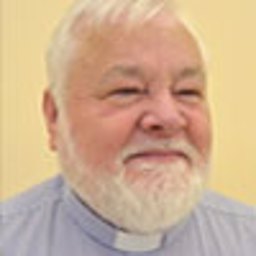By the time you read this column, Christmas is done, or close to being done. After all, for Christians, Christmas isn’t just a day; it’s a whole season which is made complete on the 12th Day of Christmas, January 5, the Eve of Epiphany.
In any case, Christmas is done. It’s been a different kind of celebration this year—quieter, smaller, simpler. No big parties or gatherings this year. Worship this Christmas was not even close to what we are used to. No carol–singing–choirs. No hushed midnight services.
And Christmas is done. Now what? I am asking that question in a specific way. Let me explain.
Advent is a season of preparation. We light candles as a deep and primal symbol of the growing light. While many churches name these candles—hope, peace, joy, love—that is not their primary purpose as symbols. They don’t “stand for” something. Rather, the candles are more primal symbols. They are about light.
We begin Advent in the darkness. In our world, it’s easy to keep the literal darkness at bay with our easy access to electricity, but Advent still comes as the days grow shorter and the nights longer. We are preparing for the birth of the one whom we name “the Light of the world”.
Lighting candles is a way of preparing. We light one each week. The light grows slowly. In the midst of the shadows of the world, the light chases the darkness away. It is a fragile light. The flickering candles can be easily snuffed with just a light breeze, so we need to nurture the light.
Then Christmas arrives. In joy and splendour, in gratitude and trust, we light the fifth candle and we proclaim with our brother John that “What has come into being in him was life, and the life was the light of all people. The light shines in the darkness, and the darkness did not overcome it.”
The Light shines, more strongly than the shadows of the world, more deeply than the fear in our world. It is more loving and compassionate than anything else in the world.
And now, after Epiphany, we are back into what the church calls “ordinary time”. In the language of the liturgical year, ordinary doesn’t mean commonplace or ho–hum or familiar. Rather, it comes from the Latin word ordinalis, which refers to numbers in a series. We count these Sundays as the Second Sunday after Epiphany or the Twenty–Third Sunday after Pentecost. Ordinary time. Counted time, Time to reflect.
We move back into ordinary time and it gives us the opportunity to live in the light which we celebrated at Christmas. In ordinary time, in the time after the celebration, we live out what it means to be people of the Light.
Christmas is done. Now what? Now we have the opportunity to seek signs of the light in our own lives. Where do you see those signs of the light, even in the midst of pandemic? How are you living out your trust that “the light shines in the darkness and the darkness did not, can not, overcome it”?
The other way of asking this question, I suppose, is to ask what difference Christmas makes in our lives. How is the Light being made real in the lives we live in this world? How does the way we live add to the Light? Or subtract from the Light?
Now is the time. Even though we may not know for certain where we are going or how we will get there (to echo Thomas Merton’s prayer), we are people of the Light. We live in the ways of the Light, which are the same as the ways of love. Now we have the opportunity to live in the light which we celebrated at Christmas.
It’s another one of the gifts of Christmas.

